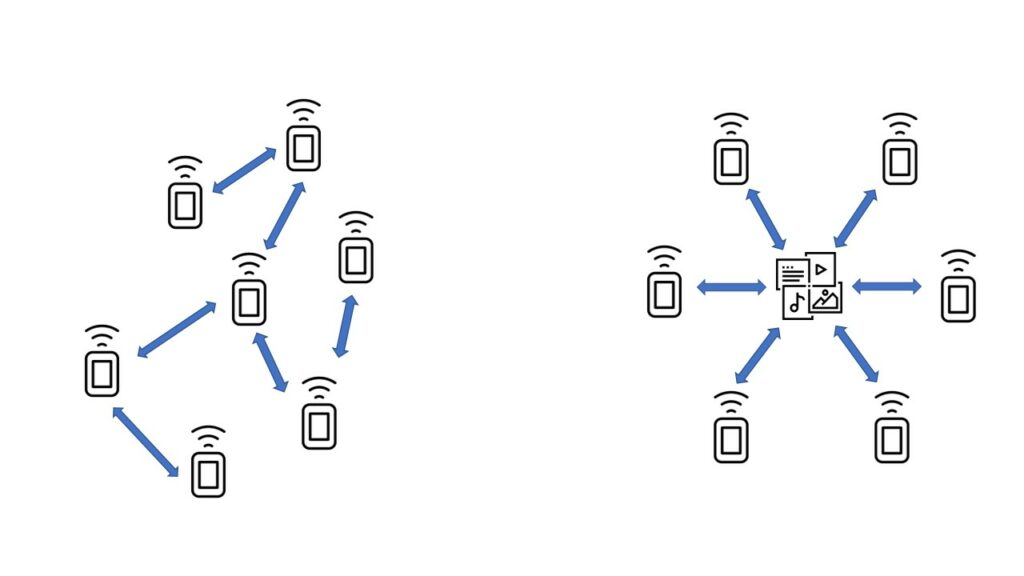As mentioned in previous posts, D2D connections are those links that do not rely on a network infrastructure to intercommunicate with one or more devices. In addition, given the flexibility of its implementation, we can cover a wide range of technologies from which we can take advantage of their algorithm and transmission speed methods.
Among the most popular technologies that D2D can use, we can highlight the use of Bluetooth 5.0 or WiFi Direct. In fact, Bluetooth 5.0 stands out as a low-cost and low-power technology, making it one of the most widely deployed in the market. However, its relatively modest transfer speed makes it suitable for information exchange. WiFi Direct, on the other hand, stands out for its bandwidth and fast transfer rate between devices. However, it is not a technology designed for flexible architectures.
That said, D2D can use both technologies, taking advantage of each and compensating for their weaknesses. This can be achieved by analyzing the strategies used for each use case.
An example of this can be the use of Bluetooth 5.0 for the interconnection of IoT devices in agriculture. Here, the devices need a flexible architecture and do not require a high transfer rate due to the messages they carry.
Another example could be a use cases that require a high throughput rate but with a more rigid architecture, such as streaming information or the distribution of data files between users. Here D2D can take advantage of the neighbor discovery protocol of Bluetooth 5.0 and the throughput rate of WiFi Direct links.
In conclusion, D2D can be an attractive solution in the IoT market due to its flexibility to cover a large number of solutions and its ability to combine different technologies to maximize their benefits.

